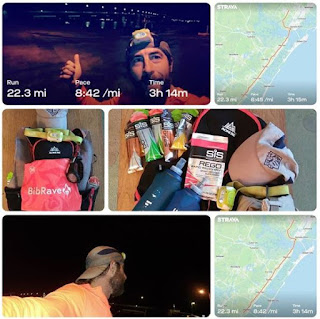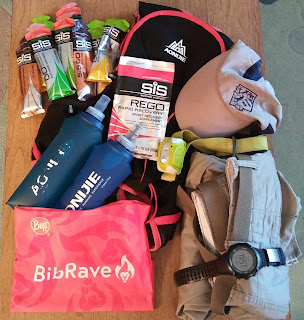An effect of this process was my outlook on races and running. Without races, I had to test my beliefs about my true motivation to run. Had I been running to train for races or did I truly enjoy the process of training as I have preached? This idea and method of assessing my running goals developed for me this past weekend during my long run. I wasn’t sure how to approach this blog post and I wanted to run for a few hours so I figured I’d give it some thought while I run. It seems that I come up with more creative ideas and am better at problem solving while running. The ideas usually seem genius to me while running, but too often when I get back home they’ve lost their spark or I’ve completely forgotten them. During this past weekend’s long run I listened to music (something I don’t do regularly while running). A meaningwave song by Akira the Don with excerpts of audio of Jordan Peterson speaking about the value of music came on. While listening to it and running, I realized that what he was saying about music is what I feel about running: the “patterns” I find in a single run or over the course of months of runs with varying tempos, the emotional highs and lows, and the delivery of a feeling of transcendence when everything falls into place and is as it “should” be.
“I think the most accessible form for most people is music.
And music to me is the most representational form of art because I think that the world is made out of patterns.
And we perceive some patterns as objects but fundamentally it’s patterns and what you want is all the patterns of the world to interact harmoniously in something where every element is related intelligibly to every other element.
And I think that when your life is in harmony that you can feel that.
When you’re dancing to beautiful music you’re acting that out.
The music is the music of the spheres and you’re participating in the patterning of your being in accordance with that structure and that gives you an intimation of transcendence.”
---- Jordan Peterson ----
So with that short introduction, or maybe it was a tangent, here’s my 2020 goals assessment....
2020 Goals:
- Run at least one 24 hour event (scratched)
- PR longest distance in a single run (>104.8 miles) (complete)
- Complete my "Run Every Single Street" of Egg Harbor Township project (progressed)
- Run at least one “last person standing” event (scratched)
- Volunteer at a local race with my son (altered)
Goal number 5 could have been scratched altogether for the same reason as goals 1 and 4, but I decided to alter it a bit and complete an adjusted goal. Rather than volunteering at a local race with my son as I had intended, we helped out with a couple organized clean ups along a multi use path that I run on occasionally. It wasn’t as much fun as I had expected volunteering at a trail race with my son would have been, but again I was forced to adapt to the situation. Rather than just give up and do nothing, I wanted to do something. I thought this was a good compromise that would still benefit the running community in my area.
Last is goal number 3, to complete my “Run Every Single Street” of Egg Harbor Township project. This goal is the only one that was not impacted due to COVID-19 restrictions. Yet I still didn’t complete it. I’ve made quite a bit of progress as I am at almost 50% complete, but that’s only about the halfway point. Why didn’t I complete this one? The main reason is because of the self imposed rules or restrictions I have put on myself and the manner in which I intend to complete this project. When I started, I had planned to drive to starting points to run new streets once I surpassed the 25% complete threshold. Well, 25% came and went and I continued starting all of my runs to reach new streets from home. This of course adds lots of miles as I am “rerunning” the same roads to reach new roads. Is this the right way to do it? Is it the wrong way? I guess that’s part of what intrigued me with these every single street projects.The rules are up to you. Could I have finished by now if I had been driving to new starting points? Maybe. But I’d still like to see how close I can get to 100% before resorting to that option.
So that was my running review of 2020. Definitely not the year I had hoped for, but I think that goes for everyone. I still got to run plenty of miles and achieved an FKT that I hadn’t even planned to go after so it’s not like it was all bad. I hope everyone else isn’t too disappointed with how their 2020 turned out and that they were able to find some silver linings somewhere along the way. Cheers to all, happy new year and here’s to hoping that all of your running dreams come true in 2021!
Scott Snell
December 21, 2020




















